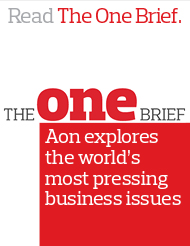Aon | Financial Services Group
Back to FSG Quick Insights | Subscribe to FSG Quick Insights >>
On August 25, 2022, the U.S. Securities and Exchange Commission (SEC) adopted pay-versus-performance rules (“Rules”). Significantly adding to the current executive compensation reporting regime, the Rules impose new and substantial compensation-related disclosure requirements on most public companies (except for emerging growth companies, registered investment companies and foreign private issuers). While the SEC has stated that the Rules are designed to, among other things, help shareholders assess a company’s executive compensation programs when making voting decisions, the Rules will also provide detailed information to the plaintiffs’ bar and activist shareholders that already scrutinize companies’ compensation disclosures and practices.
More specifically, the Rules require each covered company to include, in its proxy statement for fiscal years ending on or after December 16, 2022, extensive compensation disclosures related to the current and the past two fiscal years. Among other things, the Rules require companies to provide detailed information describing (1) the reported and (for the first time) “actual” compensation of a company’s CEO and average compensation of companies’ other named executive officers; (2) the companies’ and their respective peer groups’ total shareholder returns; (3) the companies’ net income; (4) new and notable disclosures identifying the financial metrics that companies deem most important for linking compensation to company performance; and (5) “clear descriptions” of the relationship between the foregoing compensation and performance metrics. Read more information about the adopted Rules here.
The Rules require extensive calculations and disclosures, in conjunction with robust deliberations among compensation committees, independent consultants and counsel, and a litany of internal functions, including finance and legal. Issuers, directors and officers (D&Os), and outside advisors (including counsel and compensation consultants) should be aware of the potential risks created by the Rules. These parties face risks arising from quantitative and qualitative aspects of the newly required disclosures. They are of the type that could potentially be covered by D&O liability insurance. On the quantitative front, plaintiffs’ lawyers and activist shareholders could bring disclosure-based securities class action or derivative fiduciary duty claims arising from errors made in connection with the new disclosures and the calculations required for compliance. On the qualitative front, plaintiffs’ lawyers and activist shareholders could potentially bring shareholder claims (e.g., for breach of fiduciary duty and corporate waste) alleging a perceived disconnect between earned executive compensation and company performance.
Public companies and their representatives would be wise to bear these new potential exposures. Although, the extent private plaintiffs ultimately bring and prevail on the types of claims discussed above remain unknown at this stage.
Aon is not a law firm or accounting firm and does not provide legal, financial or tax advice. Any commentary provided is based solely on Aon’s experience as insurance practitioners. We recommend that you consult with your own legal, financial and/or tax advisors on any commentary provided by Aon. The information contained in this document and the statements expressed are of a general nature and are not intended to address the circumstances of any particular individual or entity.

